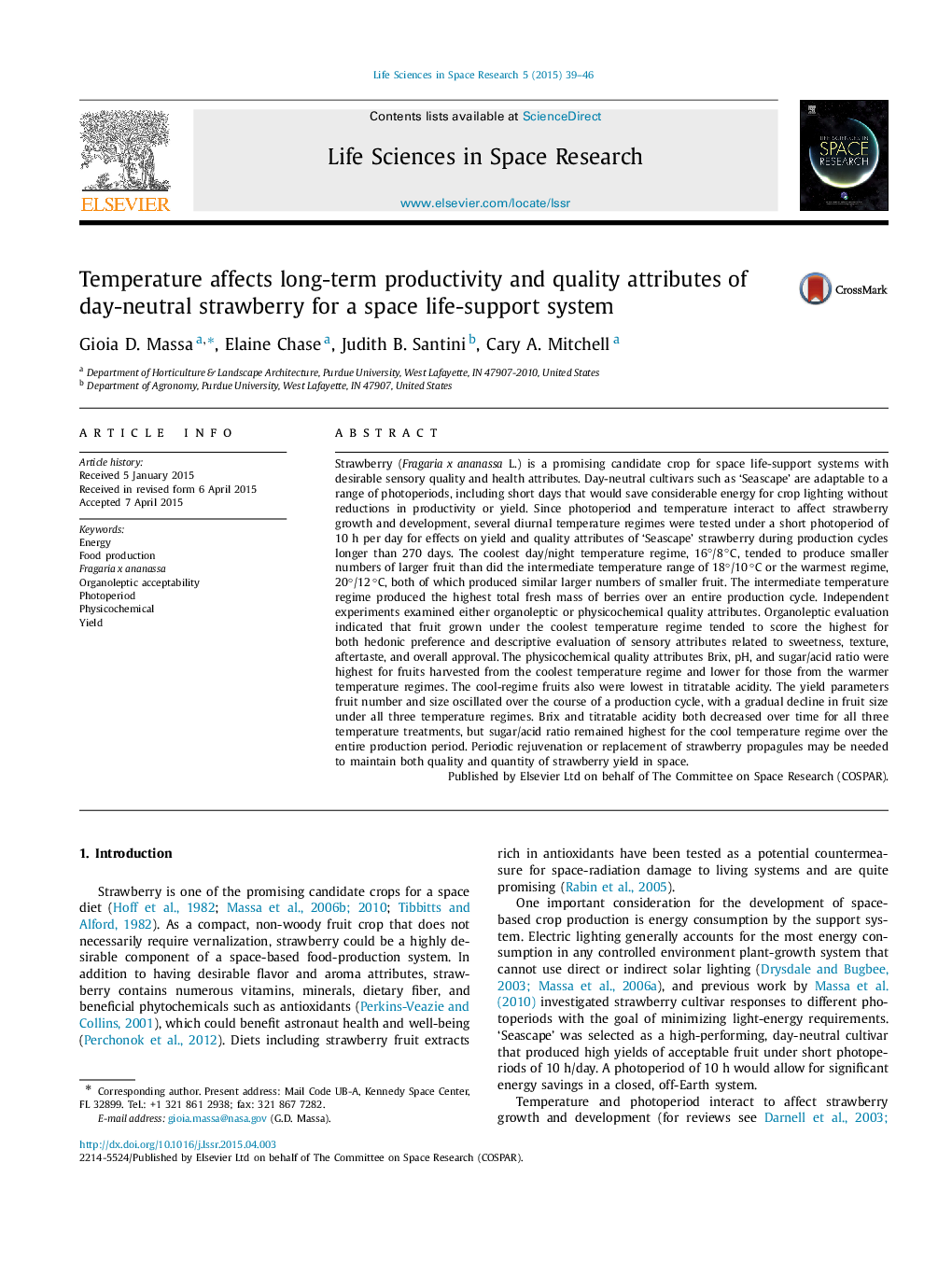| کد مقاله | کد نشریه | سال انتشار | مقاله انگلیسی | نسخه تمام متن |
|---|---|---|---|---|
| 8248065 | 1533319 | 2015 | 8 صفحه PDF | دانلود رایگان |
عنوان انگلیسی مقاله ISI
Temperature affects long-term productivity and quality attributes of day-neutral strawberry for a space life-support system
ترجمه فارسی عنوان
دما بر تولیدات بلند مدت و ویژگی های کیفی توت فرنگی روزانه برای یک سیستم پشتیبانی از فضای زندگی تاثیر می گذارد
دانلود مقاله + سفارش ترجمه
دانلود مقاله ISI انگلیسی
رایگان برای ایرانیان
کلمات کلیدی
موضوعات مرتبط
مهندسی و علوم پایه
علوم زمین و سیارات
علوم فضا و نجوم
چکیده انگلیسی
Strawberry (Fragaria x ananassa L.) is a promising candidate crop for space life-support systems with desirable sensory quality and health attributes. Day-neutral cultivars such as 'Seascape' are adaptable to a range of photoperiods, including short days that would save considerable energy for crop lighting without reductions in productivity or yield. Since photoperiod and temperature interact to affect strawberry growth and development, several diurnal temperature regimes were tested under a short photoperiod of 10 h per day for effects on yield and quality attributes of 'Seascape' strawberry during production cycles longer than 270 days. The coolest day/night temperature regime, 16°/8â°C, tended to produce smaller numbers of larger fruit than did the intermediate temperature range of 18°/10â°C or the warmest regime, 20°/12â°C, both of which produced similar larger numbers of smaller fruit. The intermediate temperature regime produced the highest total fresh mass of berries over an entire production cycle. Independent experiments examined either organoleptic or physicochemical quality attributes. Organoleptic evaluation indicated that fruit grown under the coolest temperature regime tended to score the highest for both hedonic preference and descriptive evaluation of sensory attributes related to sweetness, texture, aftertaste, and overall approval. The physicochemical quality attributes Brix, pH, and sugar/acid ratio were highest for fruits harvested from the coolest temperature regime and lower for those from the warmer temperature regimes. The cool-regime fruits also were lowest in titratable acidity. The yield parameters fruit number and size oscillated over the course of a production cycle, with a gradual decline in fruit size under all three temperature regimes. Brix and titratable acidity both decreased over time for all three temperature treatments, but sugar/acid ratio remained highest for the cool temperature regime over the entire production period. Periodic rejuvenation or replacement of strawberry propagules may be needed to maintain both quality and quantity of strawberry yield in space.
ناشر
Database: Elsevier - ScienceDirect (ساینس دایرکت)
Journal: Life Sciences in Space Research - Volume 5, April 2015, Pages 39-46
Journal: Life Sciences in Space Research - Volume 5, April 2015, Pages 39-46
نویسندگان
Gioia D. Massa, Elaine Chase, Judith B. Santini, Cary A. Mitchell,
